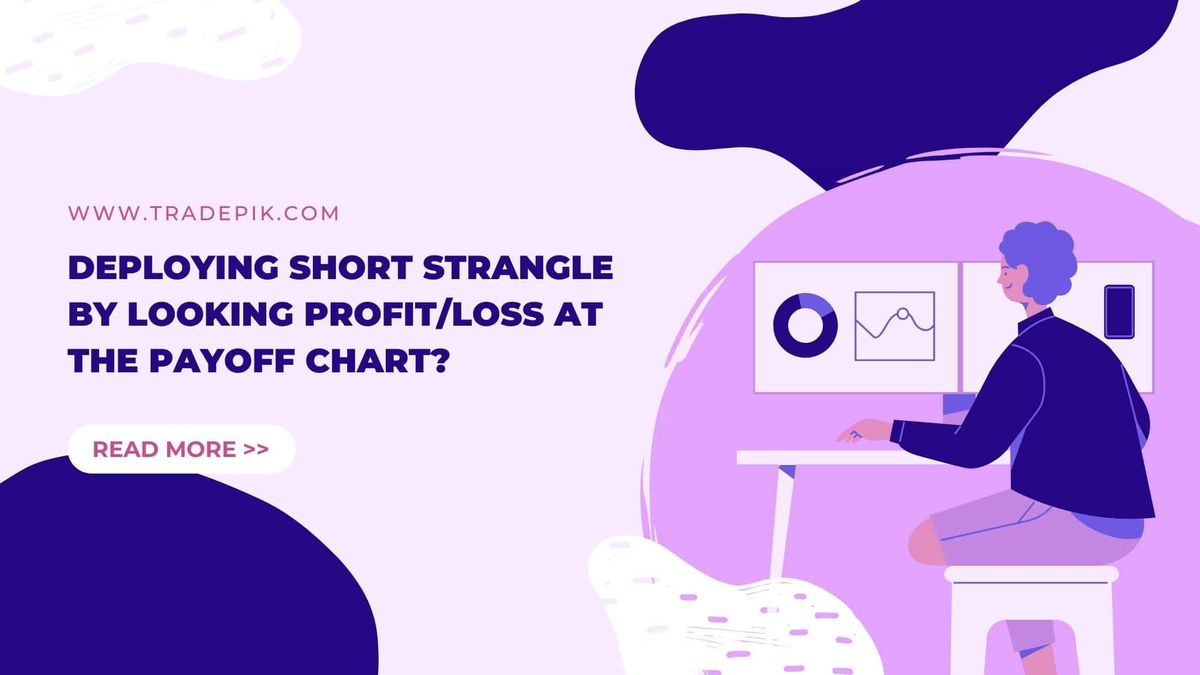Deploying short strangle by looking at profit/loss at the payoff chart? - A must-read for beginners!

The market for selling options is currently seeing a large influx of newcomers. They have seen a lot of social media experts advising people that there is a good chance of making money if you deploy short strangles, but the truth is quite different. In this article, I will show you how a trade can be a big disaster if you are selling strangle by just looking at the profit/loss on the payoff chart.
Before we go further, let us understand what is a strangle strategy:
Deploying short strangle by looking profit/loss at the payoff chart? – A must read for beginners! Click To Tweet
What is a short strangle option strategy?
A strangle option strategy is a two-leg strategy where we are selling a OTM (Out of the money) Call option and a OTM put option. To understand this let’s take an example:
Nifty is trading at 15750 and we want to sell a strangle of 750 points away from the current price. So, the strategy will be:
- Sell 16500 CE & 15000 PE
Below is the pay-off chart of a short strangle:

Now you can see that, you will get profit from a short strangle if script expires between your breakeven.
But what about the loss when nifty breaches your breakeven?
Profit or loss, in short strangle beyond breakeven
Now if you look at the payoff chart, your loss at your breakeven is around ₹12000. That means if nifty breached your breakeven due to any gap-up or gap-down you will lose around ₹12000.
This is the biggest mistake beginners are doing. The above payoff chart shows your profit/loss assuming that other Greeks will remain constant. What do other Greeks mean? Volatility.
Deploying short strangle by looking profit/loss at the payoff chart? – A must read for beginners! Click To Tweet
Option pricing heavily depends on volatility. Your option premium will be significantly impacted by a modest increase or decrease in volatility.
Here what beginner think. If Nifty start moving downward, I will get loss from PUT but will get profit from Call. So, my net loss will be low.
But What happens in reality?
If you get a breakout or breakdown due to any gap-up or gap-down, you IV (Implied Volatility) will increase. Right?
Now when you IV increase your premium will also increase. Right? That means you are getting loss in PUT due to delta (downside movement) and from IV.
On the other hand, what happens in your Call? Your premium will come down due to downside movement but because IV is increasing your premium will also increase. That nullify the decrease in premium due to delta.
In simple words, you will get high loss in PUT leg while barely making any money on the CALL leg and end up with a high loss without any idea about what is happening in your trade.
So, my friend, don’t fall in this trap of short strangle if you are a beginner and don’t know about option pricing, Greeks and implied volatility.
My advice for a beginner as an option seller
Remember that there is no such thing as “easy money” if you are a newbie.
Trading needs a foundational understanding and experience, just like any other industry. If you are serious about starting a career in options trading, you should look for a mentor with relevant experience, understand the fundamentals, and implement your plan gradually.
Don’t assume that putting a few lakhs to your trading account and reading articles on social media will make you a successful trader.
I hope this article will help you to choose your strategy wisely. If you have any query related to options strategies, can post in the comment box.
Options Strategies – A Mentorship Program
Learn About Trading Options in a course led by an Industry Expert. It doesn’t matter how old you are, the mentorship program is open to everyone who wants to learn more about the various option trading strategies. You’ll learn everything you need to know about these strategies and more. Don’t wait, Enroll today!
Learn Option strategies with Sachin Sival
DISCLAIMER: – we are not a SEBI research analyst. Views posted here only for educational purposes. There is no liability whatsoever for any loss arising from the use of this product or its contents. This product is not a recommendation to buy or sell, but rather a guideline to interpreting specified analysis methods. This information should only be used by investors and traders who are aware of the risk inherent in securities trading.





